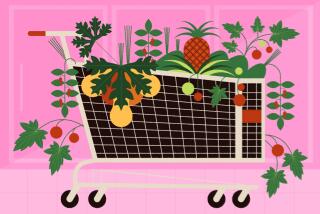Put Pencil to Paper, Spade to Soil for Vegetables
Gather on the kitchen table some clean white paper, a sharpened pencil, a ruler, and notes and plans of gardens past. Then map out this year’s vegetable garden.
The first order of business is to plan for crop rotation. Not planting any vegetable in the same spot more often than every fourth year starves out some pests before they have a chance to multiply. Pests often are equally fond of all plants in a plant family, so rotate by family.
Tomato, pepper, eggplant and potato are in one family. Cabbage, broccoli, cauliflower and Brussels sprouts are in another. Beans and peas are in another, and the same goes for carrots, celery, celeriac and parsley. So in the years before you replant tomatoes, you could grow cabbages, then beans, then carrots in that spot.
You might also rotate plants according to their effect on the soil. Leafy vegetables take a lot of nitrogen, beans and peas add nitrogen, fruiting vegetables (tomato, pepper, eggplant) soak up phosphorus, and root vegetables use a lot of potassium. So at a particular spot, you might grow a leafy vegetable one year, then a fruiting vegetable, then a root vegetable, then a pea or bean, and finally back to a leafy vegetable.
To eke the most from every square foot of garden space, consider incorporating “succession planting” into your planning. Because few vegetables are in the garden the whole season, at a given spot you could grow more than one crop back to back. Examples include spinach following peas, carrots following lettuce, and broccoli following bush beans.
One more planning tool, “intercropping,” also maximizes use of garden space. Until large plants fill out, there’s room between them for smaller plants. You could tuck lettuce between tomato or broccoli plants, or plant a few radish seeds here and there in a carrot row. You’ll have eaten the lettuce or radishes by the time the tomato, broccoli or carrot plants are growing and needing the space.
Trying to incorporate all this information into a single year’s vegetable garden plan can be a daunting task, especially the first time you do it. Experience and use of previous years’ maps make planning easier as the years go by.
A final point to keep in mind is that planting a vegetable garden is even more important than planning one. Never forgo planting for lack of a plan.






